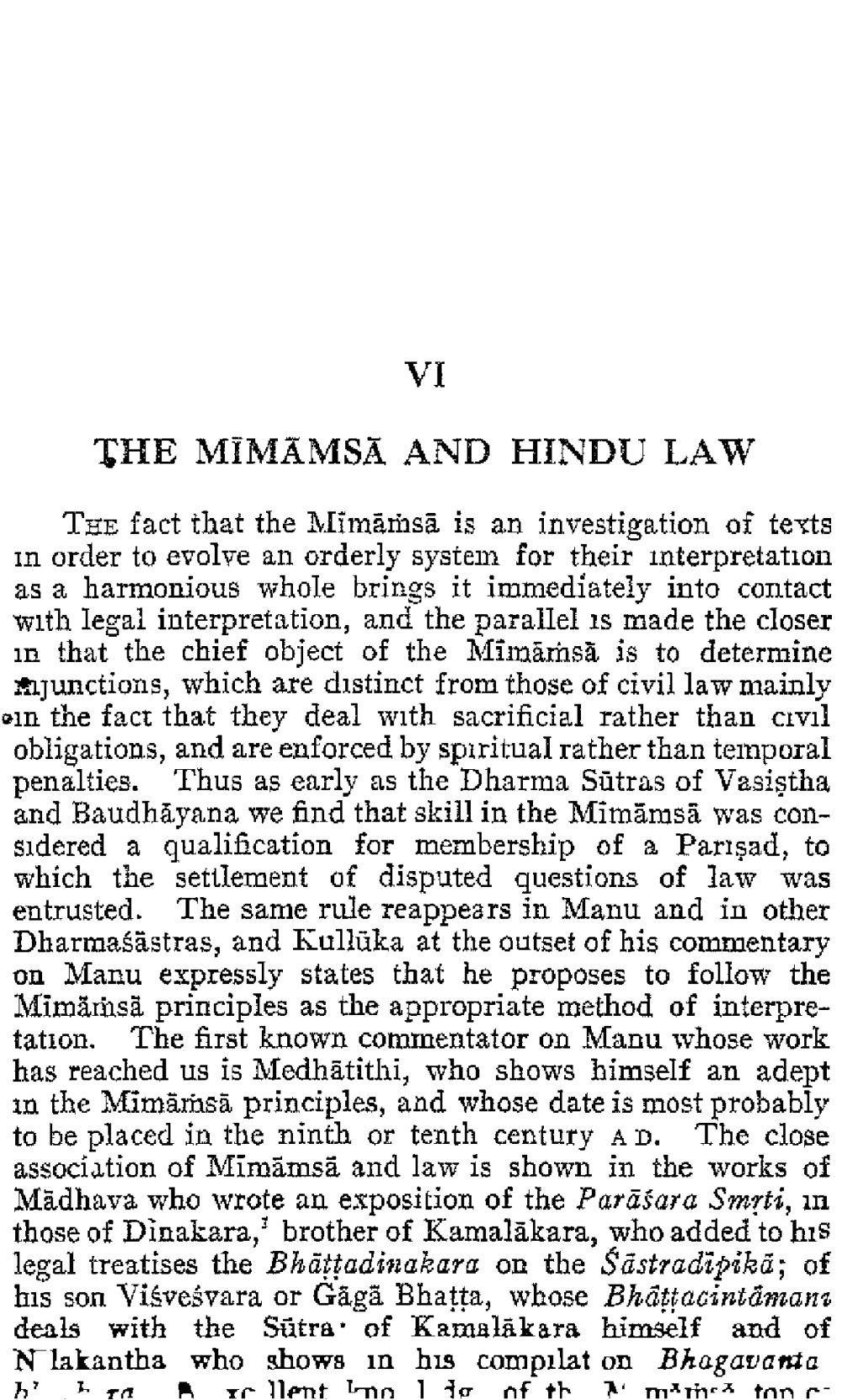________________
VI
THE MIMAMSÃ AND HINDU LAW
The fact that the Mimāṁsā is an investigation of texts in order to evolve an orderly system for their interpretation as a harmonious whole brings it immediately into contact with legal interpretation, and the parallel is made the closer in that the chief object of the Mimāmsà is to determine Mljunctions, which are distinct from those of civil law mainly oin the fact that they deal with sacrificial rather than civil obligations, and are enforced by spiritual rather than temporal penalties. Thus as early as the Dharma Sūtras of Vasistha and Baudhāyana we find that skill in the Mimānsä was considered a qualification for membership of a Parişad, to which the settlement of disputed questions of law was entrusted. The same rule reappears in Manu and in other Dharmaśāstras, and Kullūka at the outset of his commentary on Manu expressly states that he proposes to follow the Mimārnsã principles as the appropriate method of interpretation. The first known commentator on Manu whose work has reached us is Medhātithi, who shows himself an adept in the Mimārsā principles, and whose date is most probably to be placed in the ninth or tenth century AD. The close association of Mimāms and law is shown in the works of Madhava who wrote an exposition of the Parāśara Smrti, in those of Dinakara, brother of Kamalakara, who added to his legal treatises the Bhättadinakara on the Sastradipikā; of his son Visvešvara or Gågã Bhatta, whose Bhattacintamani deals with the Sūtra of Kamalakara himself and of Nlakantha who shows in his compilat on Bhagavanta hi ha Arc llent inn i to of th 1 mimet tona




